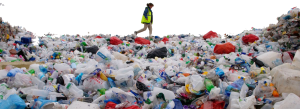The way things have always been designed determinates the duration of its life, giving it an end.
take – make – waste

Circularity means giving to our natural resources the opportunity to play different roles through the duration of their lives and designing ways to reuse materials and objects we already have to extend their use.
This regenerative approach is in contrast to the traditional linear economy, aiming to be an economic system that minimises waste and makes the most of resources.
This can be achieved through long-lasting design thinking, maintenance, repair, reuse, systems thinking, product life extension and recycling.
Did you know that waste and pollution are largely a result of the way we design things?
Waste and pollution are not accidents, but the consequences of decisions made at the design stage, where around 80% of environmental impacts are determined.
The Circular Economy appears as a helpful solution to diminish the environmental impact of the construction industry, one of the world’s largest waste generators.
The main causes of the construction’s environmental impact are found in the consumption of non-renewable resources and the generation of contaminant residues, both of which are increasing at an accelerating pace.
Decision making about the Circular Economy can be performed on the operational (connected with particular parts of the production process), tactical (connected with whole processes) and strategic (connected with the whole organization) levels.